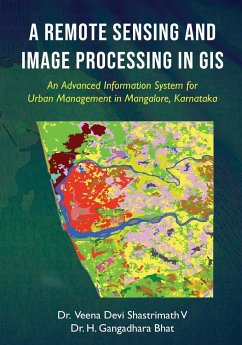Urban areas worldwide, including Mangalore in Karnataka, face profound challenges due to rapid and often unplanned urbanization. India, particularly, has seen its urban population double from 1991 to 2008, with an annual growth rate of 2.3%. This surge has strained infrastructure, led to the loss of agricultural land, and exacerbated issues like inadequate services and poor waste management. Mangalore specifically grapples with urban transportation issues, pollution, and the urban heat island effect. To tackle these challenges, comprehensive plans spanning chapters III to VI propose actionable strategies. These plans encompass road networks, geology, hydrology, drainage systems, land use practices, waste disposal, sewage treatment, population density management, and flood control. Leveraging remote sensing and GIS technologies has been crucial, enabling the creation of detailed thematic layers to guide sustainable urban development strategies. By integrating these technologies and adopting strategic plans, Mangalore aims to mitigate the adverse effects of rapid urbanization while fostering a resilient and livable urban environment for its growing population.




![AS/400 Tcp/IP Handbook [With CDROM] AS/400 Tcp/IP Handbook [With CDROM]](https://bilder.buecher.de/produkte/44/44214/44214774m.jpg)


